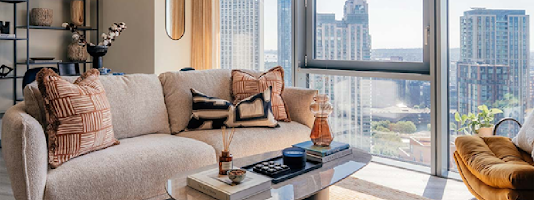Biophilia can be described as the integration of nature into buildings to create an environment that is closely related to nature. The two natural factors it includes are sunlight, plants, natural materials, and the vicinities of nature. By applying Biophilic design with STYLARC, people’s health, well-being, and productivity also increase when they spend some of their time indoors. This article aims to bring you up to speed with some of the recent trends in biophilic design that you can try at home or in your workplace.
Introducing More Realistic Live Plants and Succulents
Among the most widespread biophilic design trends, people can mention the desire to incorporate as many live plants and greenery into the interiors. Some research by STYLARC reveals that exposure to live plants can lower stress levels, enhance creativity, and even the ability to focus and work effectively. How can one incorporate more plants into their design? Some simple things that can be done are greening walls, installing more plant boxes, and placing plant features like green walls by staircases or corridors.
Letting In Natural Light
One other important feature of biophilic design is the introduction of sufficient natural light into the buildings. Sunlight helps to control our circadian cycles and also synthesizes vitamin D. Design with large windows, glass partitions, light tubes, and other high-light windows such as clerestory windows well above the ground or lower floor level. It is also recommended to use different types of natural lighting, such as solar tubes or fiber optics, to extend the light deeper into the buildings as well.
Adopting Natural Materials
Other aspects of biophilic spaces include increased use of colors linked to nature and more natural materials such as stone, wood, bamboo, cotton, wool, brick, and linen. Some of the studies conducted reveal that when used in product design, natural and textured surfaces are preferred by the users. Select materials that are eco-friendly, such as bamboo flooring, which is a quickly renewable material, and wood, which has the FSC certification. Add variation to the textures for the sense of aesthetics through the rough brick finish of the walls, woodwork, coir carpeting, etc.
Smoke Control
Originally known as Smoke Control with Nature Views and Landscape containing the element of smoke control was added to a large number of buildings. Another essential concept of biophilic design includes the incorporation of scenes from nature. Take advantage of expansive windows and glass walls, perimeters, or balconies to showcase stunning outdoor views of landscapes. Think green roofscapes and outdoor living areas such as gardens or dining areas. Build site structures to also ensure that the view of parks, lakes, or woodlands is also observable from inside the structures.
Conclusion
With individuals seeking solutions for peace of mind and improved physical well-being following the COVID-19 outbreak, biophilic design may serve this purpose by incorporating designs that reconnect occupants with the natural world, according to the experts of STYLARC. Above are the top trends for biophilic indoor environment design that you should follow, such as greens, sunlight, natural material, and nature views for better results.





No comments:
Post a Comment